- How to Propagate Monstera Guide: The Three Ways to Succeed - September 17, 2021
- Escargot Begonia: Why Is The Rex Begonia So Rare? - August 31, 2021
- Rieger Begonia: When You Can Expect The Hiemalis Begonia To Flourish - August 31, 2021
Peperomia Ruby Cascade is a charming and picturesque plant from the tropical regions of South and Central America. It is not a true succulent but its leaves act like a succulent since they are capable of storing small amounts of water. Another interesting feature of this plant is its relation to pepper plants. Peperomia plants are members of the Piperaceae family, which includes peppers.
How to Identify Ruby Peperomia
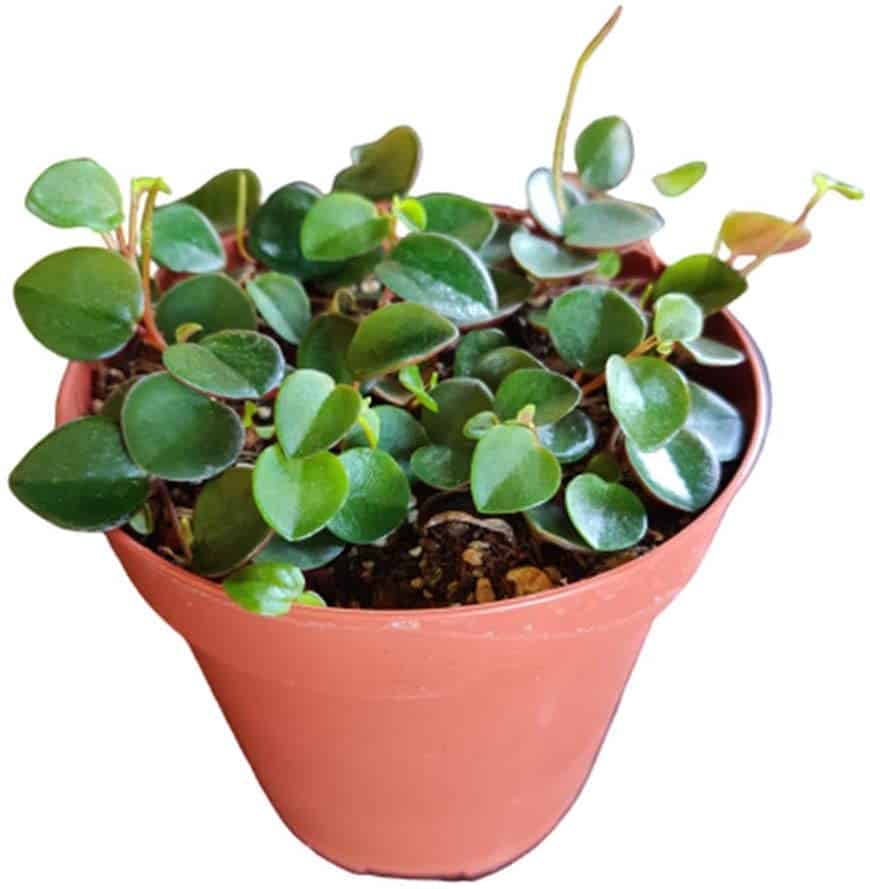
This variety of Peperomia has many of its family’s key features, but alongside those, it has its own unique look. When trying to identify Ruby Peperomia, look for these features:
- Oval or oblong-shaped leaves
- Leaves that are shiny and green on their tops but red on their bottoms
- long cascading vines
- Flowers that are red or pink and conical shaped
How To Grow Ruby Peperomia From Seeds
Starting from seeds is not the preferred method for growing one of these plants since it can be very time-consuming and other methods are significantly quicker and easier. But, this does not mean that you should not try. If you are determined to grow one of these via seeds, follow these steps:
- Purchase seeds from a reputable seller (sellers who price their seeds between $1 and $2)
- Fill a container with a soilless seed starting mix
- Plant the seeds in the seed starting mix
- Water the mix so that it is moist but not soggy
- Place plastic wrap over the top of the container
- Set the container in a warm spot that gets plenty of bright, indirect sunlight
- Once sprouts appear, transplant the seeds to a container filled with soil that has a pH level between 6 to 6.5
How to Propagate Ruby Peperomia
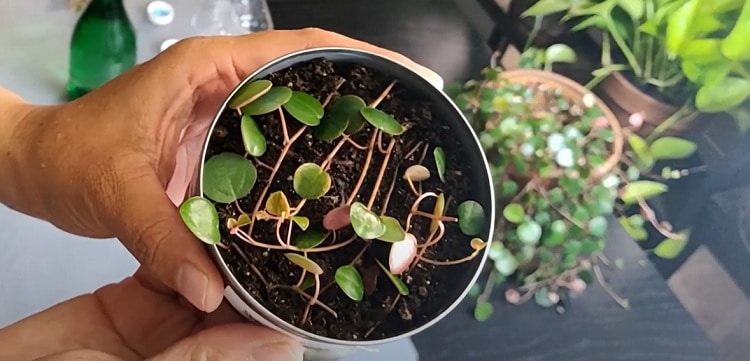
The two plant propagation methods that are preferred above planting seeds are leaf cuttings and plant division. Both methods are simple and straightforward processes that can be done during spring pruning sessions or whenever you feel that it’s time for your plant to be repotted.
The Leaf Cutting Method
- Clean a pair of scissors or another type of cutting utensil
- Cut off a healthy leaf that includes a petiole
- Set the leaf out for a few days to allow it to callus
- Fill a plant container with well-draining soil that includes 50% peat and 50% perlite
- Dip the end of the leaf in a rooting hormone
- Stick the leaf into the soil
- Set the plant container in an area that is warm and receives plenty of indirect or filtered sunlight
- Water the new plant when the top layer of its soil is dry
Note: You can actually grow two new plants from one leaf if you cut them in half. The part that contains the petiole will grow faster than the part does not, but they are both capable of growing new plants.
The Plant Division Method
- Carefully remove the plant from its container
- Gently dust off its roots without touching them a lot
- Use the clean cutting utensil to separate stems and roots
- Repot each section in clean and well-draining potting soil
- Set the new plants in an area that is warm and receives plenty of indirect or filtered sunlight
- Water the new plants when the top layer of their soil is dry
Ruby Peperomia Growing Conditions
These are tropical plants that cannot handle cold weather; they thrive in high temperatures and high humidity levels. To keep them healthy, you will need to provide them with temperatures ranging between 65 and 80 degrees Fahrenheit with humidity levels ranging between 40% and 60%; in fact, these little plants like humidity levels up to 90%.
If you prefer not to live in the greenhouse inside your home, you can purchase a Pebble tray or a Plant humidifier to provide extra humidity and a Plant Heat Mat to provide extra warmth. These technologies allow you to keep your plant comfortable and cozy while not getting stuffy and sticky in your own home.
How to Plant Ruby Peperomia
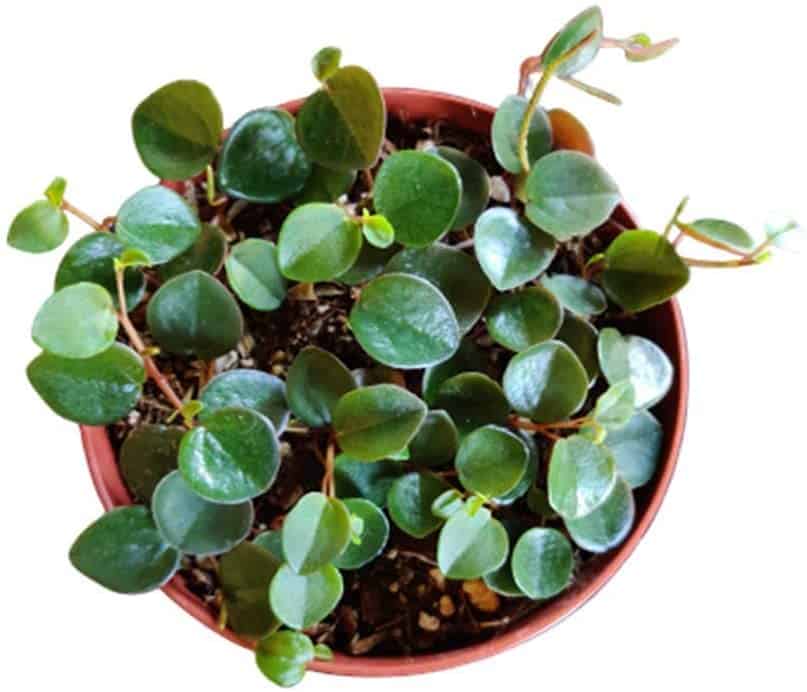
These plants grow slowly and they do not mind being tight and cozy in their plant container. This means that they will only need to be repotted every two to three years. Repotting will provide the plant with new soil and extra nutrients, as well as assist in keeping the plant container clean from pest infestations and diseases.
Keep an eye out for the following signs to know whether or not your plant needs repotted before two to three years has passed:
- Compacted Soil
- Roots that are crowded and growing into a ball formation
- A plant that looks too big for its current container
When it comes time to repot your Ruby Peperomia, follow these steps:
- Fill a container with potting soil (if the plant has outgrown its current container, choose a new container that is two inches larger in diameter)
- Create a hole in the soil for the plant to set inside
- Carefully remove the plant from its current container
- Gently dust off any excess soil from its roots
- Set the plant into the hole in the new container
- Spread the soil around so that the plant is secure in its new container
- water the plant
- Set it in a warm spot with indirect sunlight
Ruby Peperomia Potting & Soil
It’s important to select the proper potting soil and a proper plant container because this can reduce the chance of root rot, pest infestations, and other diseases plants face. Proper potting soil and a proper plant container should be capable of draining off excess water.
Try these recommended products for your Peperomia Caperata:
- The Succulent Cult’s Organic Succulent & Cactus Soil Mix
- Mkono Ceramic Hanging Planter Set
Ruby Peperomia Water Requirements
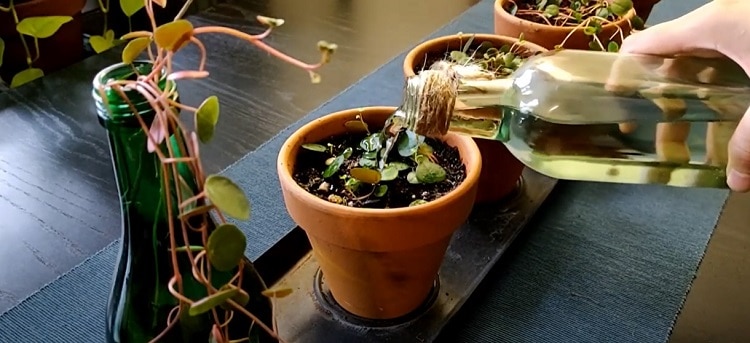
Since it is so important that plants are watered properly to reduce the risk of root rot or dehydration, take some time to really learn how to water each plant in the way it requires.
Peperomia plants of all varieties should be watered in the soak and dry method to ensure that it gets enough water but not too much. It is a very simple method with six steps:
- Test the plant’s soil before watering it. It should only be watered if the top two inches are dry. If those top two inches are still moist, wait another day to water it.
- Fill a tray or a tub with water.
- Set the plant container in the water, but make sure the water isn’t so deep that it will overflow the lip of the container. The point of the soak and dry method is to use the drainage holes in the plant container to soak up water from the bottom.
- Let the plant soak up water for fifteen minutes.
- Remove the plant from the water.
- Set the plant in a spot where the excess water can drain from the container’s drainage holes.
If you still have any hesitancies about watering your plants, try using a plant watering app to reduce or eliminate your plant watering worries. These apps will assist you in keeping track of when you watered your plants, remind you to water your plants, and answer questions about your plants. These will make your gardening days super fun and simple.
Ruby Peperomia Light Requirements
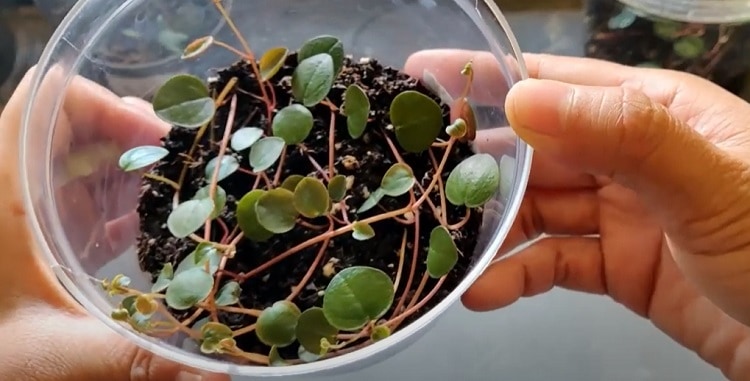
All Peperomia varieties should be set in an area that receives plenty of bright sunlight that is either filtered by a shade or is indirect. This type of sunlight will provide these plants with the light they require to grow strong and healthy but it will not dry out their delicate leaves.
If you have any hesitations about how to properly set up your plant for sunlight success, use either a light meter or a light meter app to assist you.
Best Ruby Peperomia Fertilizer
All Peperomia varieties do not need to be fertilized very much or very often. These plants should only be fed during spring and summer and these feedings should be diluted to 50%. Spread out these feedings every 2 to 4 weeks during this time frame.
Try Cute Farms Succulent Cacti & Aloe Fertilizer for this plant.
Best Ruby Peperomia Companion Plantings
As a heat and humidity-loving plant, Ruby Peperomia can benefit from plant clustering . Set up all your humidity-loving plant for success by placing them in a room together. In this setup, they will share their humidity and raise the humidity levels in the room. Here are a few plants that will provide your Peperomia plants with extra humidity and aesthetic appeal.
Calathea Peacock
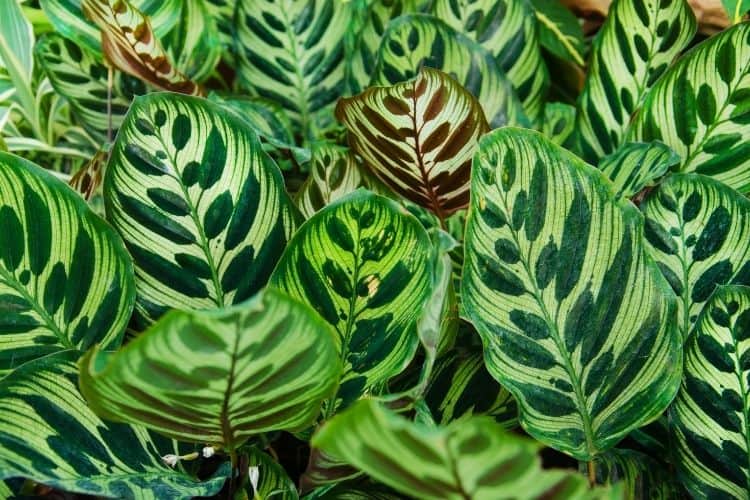
This Calathea variety will certainly complement the looks of your Ruby Peperomia. It too has leaves with green tops and red bottoms. This is a very pretty plant that is actually not difficult to grow and care for.
Pros
- Calathea Peacock has care requirements that are similar to those of Peperomia Ruby
- Calathea Peacock is not toxic
Cons
- Calathea Peacock is not cold hardy
- Calathea Peacock is susceptible to infestations of aphids, scale insects, and spider mites
Pearls and Jade Pothos
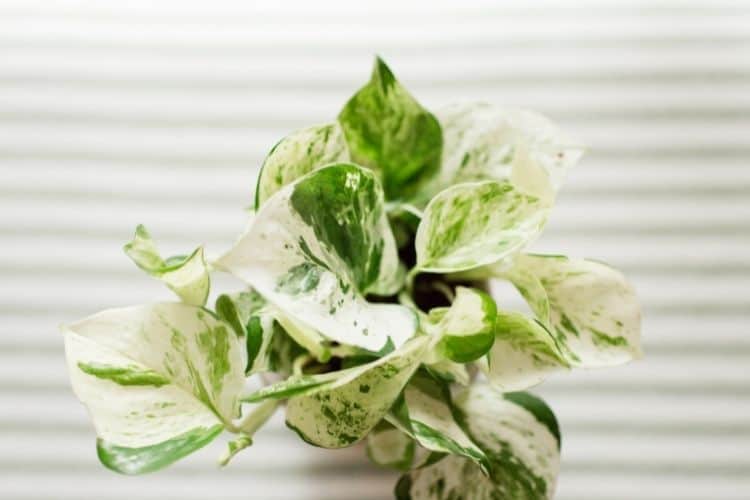
If ever there was a plant that was unfussy, this is it. As a Pothos variety, you can be guaranteed a hardy, beautiful, and easygoing plant. Alongside its unfussy and easygoing nature, this is also a vining plant that will look lovely hanging next to a Peperomia Ruby plant
Pros
- Pearls and Jade Pothos have care requirements that are similar to those of Peperomia Ruby
- Pearls and Jade Pothos grows leaves that are variegated in white and green
- Pearls and Jade Pothos grows in a vining structure
- Pearls and Jade Pothos is easy to propagate
- Pearls and Jade Pothos can grow hydroponically
Cons
- Pearls and Jade Pothos are susceptible to infestations of aphids, mealybugs, scales, spider mites, and thrips
Calathea Lancifolia
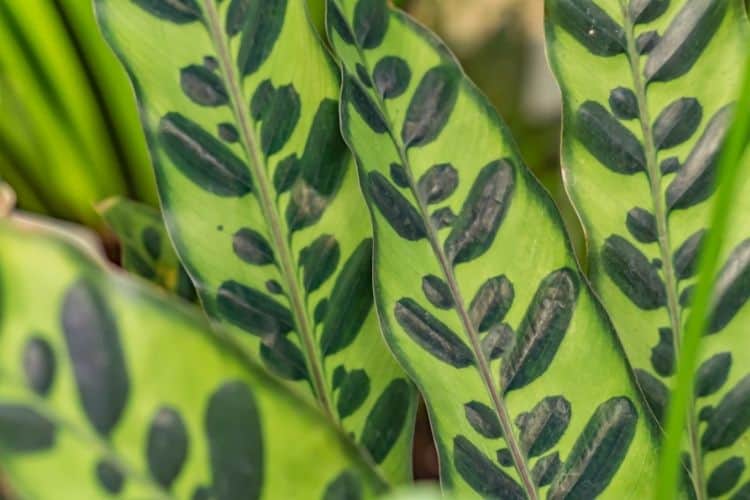
This is a highly unusual-looking plant that can grow up to thirty feet tall in the wild. It is another tropical plant that will share humidity and beauty with a Peperomia Ruby plant.
Pros
- Calathea Lancifolia is easy to grow and care for
- Calathea Lancifolia has a unique look
- Calathea Lancifolia is easy to propagate
- Calathea Lancifolia has air purifying qualities
- Calathea Lancifolia is not toxic to pets
Cons
- Calathea Lancifolia is not cold hardy
Ruby Peperomia Diseases and Common Problems
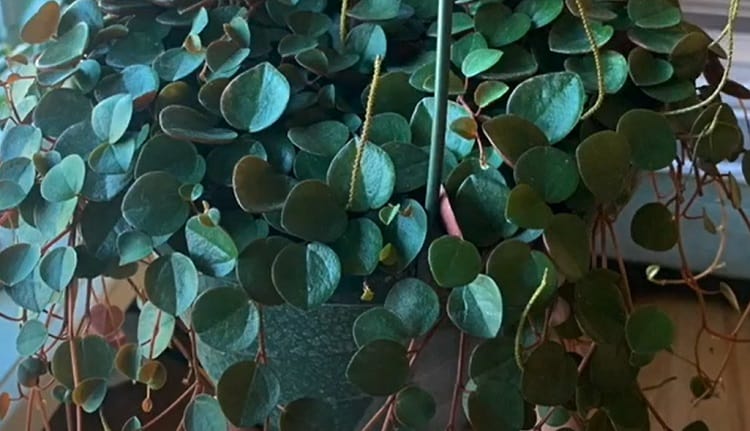
Here is a list of the most common issues faced by these plants. In this list is information on how to identify and treat each issue.
Browning Leaves
This is a typical symptom that arises in plants that have been exposed to too much direct sunlight or too much fertilizer.
- If you have recently fertilized your plant and it is not sitting in direct sunlight, you can assume that fertilizer is the cause of your brown leaves. To fix this, flush the plant’s soil with water.
- If you have not fertilized your plant recently, check on its sun exposure. You may need to provide the plant with more shade.
Mealybugs
Evidence of an infestation of mealybugs is small white spots that look like cotton on leaves and stems. To deal with an infestation of mealybugs, follow these steps:
- Spray a solution of alcohol and water on the leaves
- Rub the leaves with a cotton ball
- Coat the leaves in neem oil or insecticidal soap every few days
Root Rot
This is caused by overwatering a plant. If you learn how to properly water your plants, they should not get root rot. If, however, you are suspicious that your plant is suffering from this, look for these symptoms:
- Stems and leaves that are black
- Stems and leaves that are translucent
- Stems and leaves that are mushy
- Leaves that are dropping off regularly
A plant that is suffering from root rot should be allowed to dry out for a few days or weeks. There’s no need to water the plant during this time. From the trim off leaves and stems that are black, translucent, and mushy. If drying out the plant does not work, it may be best to replace the plant’s soil altogether.
Spider Mites
Evidence of a spider mite infestation will show up as webbing on the leaves and stems. Sometimes the tiny insects will even be visible crawling around the plant. To treat this type of infestation, fill a spray bottle with a quart of warm water, 1 tsp. of dish soap, and 2 tsp. Of neem oil.
Use this mixture to spray and wipe the leaves and stems of the plant clean. It may be necessary to repeat this process several times to rid the plant of all the insects.
Wilting Leaves
This is a symptom caused by overwatering and underwatering a plant. You may need to tweak your watering regimen to save the plant. If it has been overwatered, you will need to either let the soil dry out or repot the plant in new, dry soil. If it has been under-watered, simply give it a drink.
Yellowing Leaves
Figuring out what is causing the leaves of a plant to turn yellow will be a process of elimination. It could be caused by any of the following:
- excessive sunlight
- too little or too much water
- Nitrogen deficiency
Ruby Peperomia Treatments and Maintenance
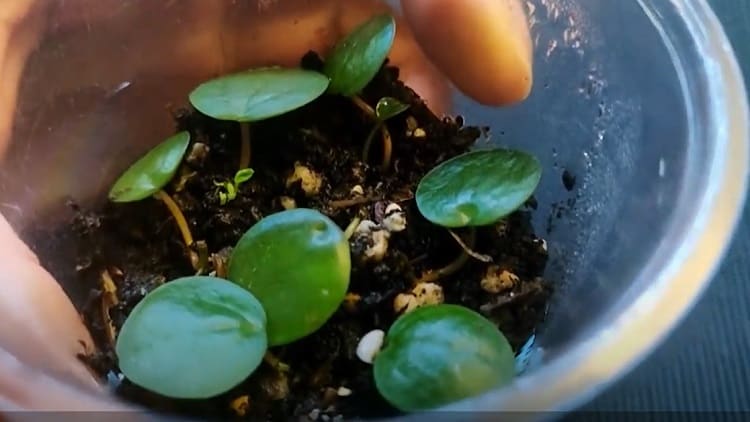
If you want healthy plants, learn what their care requirements are and learn a few maintenance techniques to keep them in optimal health. Remember, prevention is better than treatment. Here are a few tips to help keep any of your plants healthy and disease-free:
- Check it for signs of disease and infestations regularly, and treat them quickly.
- Clean the plant regularly with neem oil.
- Learn how to properly water and feed your plant.
- Make sure your plant is set in an area with adequate amounts of sunlight, heat, and humidity.
- Mix diatomaceous earth into the soil of potted plants.
Where to Buy Ruby Peperomia Seeds Online
Before you purchase seeds online, confirm that the seller is reputable and is selling a correctly labeled product. If you would like to purchase seeds to grow your own Ruby Peperomia, start with these online shops:
Where to Buy Mature Ruby Peperomia Online
Since these are popular houseplants , they are easy to find online. Gulley Greenhouse & Garden Center is a great place to begin your search for a new houseplant.
FAQs
Question: Is Ruby Peperomia Toxic?
Answer: No, this is not a toxic plant.
Question: Which USDA Hardiness Zone Can Ruby Peperomia be Planted In?
Answer: This plant only shouldn’t Be Set in the ground plot in zones 9a to 11b. If you live in a different zone, you will need to transfer this plant indoors during the winter.
Question: Can Ruby Peperomia Grow Under Grow Lights ?
Answer: Yes, these plants grow well under artificial lighting.
In Conclusion
Ruby Peperomia is a plant that every gardener should have. They are so easy to care for and they are beautiful too. What more can you ask from a plant?

